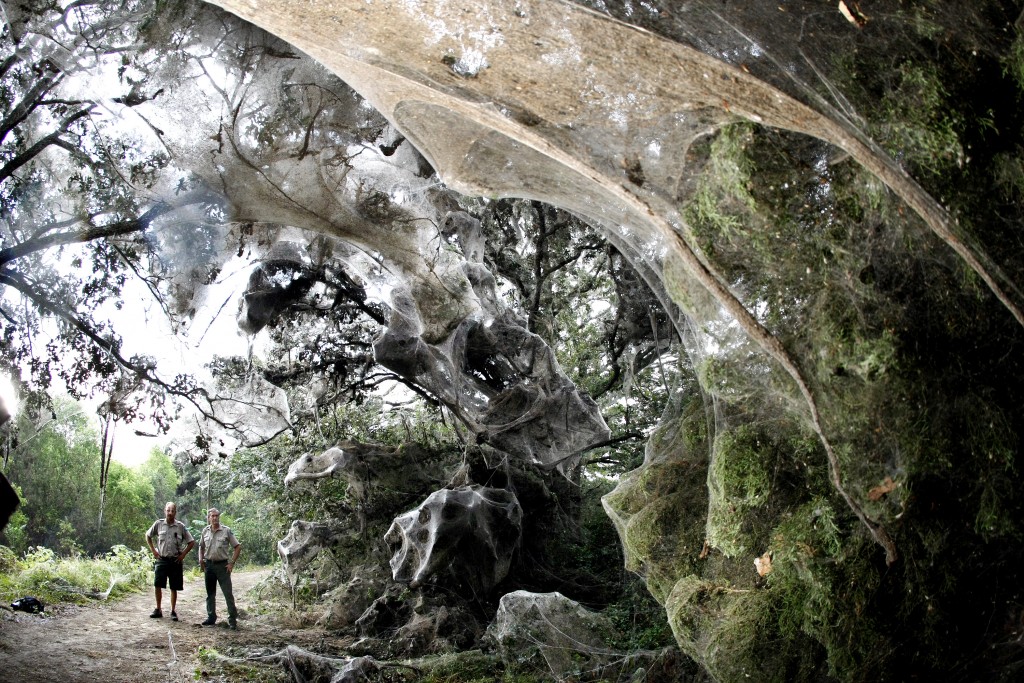Dallas Spider Webs [VIDEO]: unbelievable Spider Handiwork Leaves Texas Folks Baffled
The CA Roan Drive looks somewhat different now with the webs adorning the trees reaching up to 40 feet height and is home for several thousand spiders.
Mike Merchant, Texas A&M AgriLife Extension Service urban entomologist in Dallas, reported that people were exposed to a rather frightening and intimidating scenery, as giant spider-webs could be seen “draping” the trees everywhere.
So what spiders build such massive webs?
Mike Merchant, an entomologist working for the Texas A&M AgriLife extension service has said that it looks as if spiders have taken over the trees of the football field-length stretch of the drive.
The rare, natural phenomenon is told to appear only within the “right conditions” by spiders in the Tetragnatha guatemalensis family, which are currently now in Texas, but even then it’s not a common sight. As per them, the Tetragnathidae family could be responsible for building such extraordinarily huge webs. These spiders could be social as they share their webs to other spider species, arachnids, and insects.
However, further examination is undergoing to reveal the mystery behind this unusual behaviour of the spiders towards the spiders of the same species on the same web. Many scientists and arachnologists consider these webs to be true works of art. A phenomenon similar to this was reported in 2007 and it occurred almost 35 miles way from Rowlett, at Lake Tawakoni State Park.
The spiders that developed the webs in 2007 were identified as Tetragnatha guatemalensis.
You can see the webs hanging on the trees along CA Roan Drive in Rowlett.
He also informed that the road is running through Lakeside Park South in the Dallas suburb and the spiders have been building their web community over the trees there. Scientists suspect that thousands of spiders had worked together to create this “communal web”, so that they could better take advantage of large-scale insect migrations and hatches from a nearby lake.
He continues to saying that Arachnologists had previously noted that this species is known to build communal nests when the conditions are right.
Because of their lack of aggression, Merchant said there is really no need to treat for them. Merchant affirms that insecticides or other treatments are not necessary as this spider is essentially harmless and, the communal nests are basically benign and are a sight more to be appreciated than feared.
“[P]lease don’t touch the art”, he says.








